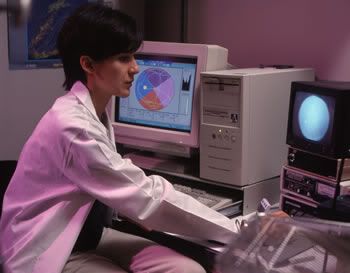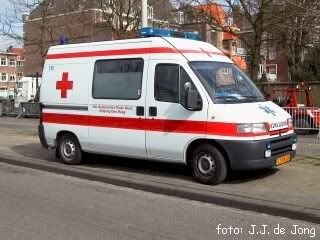Love, death, and the brainstem.
There is nothing particularly compelling about a 78-year-old man with a gait disturbance and occasional loss of bladder control. The question I needed to address was: Did he also have cognitive decline?
Our department has devoted considerable attention to “the special clinical problem of symptomatic hydrocephalus with normal CSF pressure.” We developed a cognitive and gait assessment battery to predict responsiveness to ventriculoperitoneal shunt. Typically, I am the one who performs these evaluations. The patient was an elderly Jewish man with a slowly progressive 4-month history of difficulty in gait initiation and urinary incontinence. His family members also reported he seemed less interested in his surroundings and showed less initiative, but they weren’t certain he had any actual memory impairment or other clear evidence of cognitive decline. Perhaps he was just depressed.
In accepting the referral, I could not know how much more profound this patient’s impact would be on us than ours would be on him.
Thursday is grand rounds day in our department and always hectic in the extreme. There is much to be done prior to grand rounds, of course, but also in anticipation of the upcoming weekend, for Friday is a short workday in Israel prior to the beginning of the Sabbath at sundown. When I arrived early that morning, the patient I found was not the patient I had been “sold” the previous afternoon: Though seemingly alert and attentive, he was almost completely unable to respond to simple questions. He was having some difficulty eating the breakfast his son was attempting to feed him. His son reported he had noticed the change in his father’s condition about 2 hours earlier and had remarked on it to the nursing staff. By cell phone, I reached the colleague who had referred the patient and described his condition. He stated very clearly that this represented a marked deterioration since yesterday; perhaps the patient had developed acute obstructive hydrocephalus or a stroke? We decided to “chuck the protocol” and do a CT.
Within half an hour, the patient developed left facial and right-sided limb weakness. The evolving picture was becoming clear: He was anarthric, had difficulty swallowing, was now somewhat obtunded, and had a crossed syndrome: brainstem infarction. Urgent CT demonstrated that it was occlusive rather than hemorrhagic, so heparin was started. When I went to check on the patient later that morning, one of his daughters had arrived and was at his bedside along with his son. To my considerable surprise, his daughter was none other than a near neighbor of mine of 15 years’ standing, with whom we had become friendly after my wife treated her son years before for a particularly difficult-to-diagnose infectious disease. And more: Her sister had also been a neighbor for many years before moving recently to a nearby town. Soon, all three of them and the patient’s wife had arrived, gathered around his bed, and were anxiously asking what would be of their father and husband. Each of us struggled to establish a “professional” relationship in place of one that had always been “social.” I am sure my initial discomfort was as clear to them as theirs was to me.
Three days after the patient’s brainstem infarction, on Sunday morning when the work week begins in Israel, I arrived to find his wife and three children had been taking 8-hour turns around the clock sitting by his bed, massaging him, turning him, wiping his brow, speaking to him, and making sure his kippa, the yarmulke or skullcap of a religious Jew, was on his head at all times. It was only then as I spoke to them that I noticed for the first time the tattoo on the patient’s left forearm: B4127. That tattoo very nearly told this man’s whole life story: He had, as a young man growing up somewhere in Europe, been deported to the slave labor camp in Birkenau, Poland, hence the number preceded by a “B.” Had he been tattooed with the more common “A,” it would have meant he had been deported to the neighboring (and even more infamous) death camp at Auschwitz, where survival times were very, very short and where death was sometimes preceded by the most horrific sorts of forced labor under conditions of outright starvation or “participation” in the sadistic pseudo-medical “experiments” of Dr. Josef Mengele. Somehow, he had survived, made his way to the nascent State of Israel, found work, raised a close and loving family, and become one of the many survivors of the concentration camps who tried to build “normal” lives in spite of the daily reminders of their past in the form of the numbers tattooed on their forearms.
Once again, I confronted the questions that have haunted me all my adult life: How would my family’s history have been different had my forebears not fled Germany so early? Would I have even been born? What right did I have to exist when millions perished? What do I owe the world as a result of the fact of my existence?
I soon put my own questions aside (unanswered, once again) and requested the family’s permission to answer theirs openly and frankly: Their loved one’s prognosis was very poor; only time would tell. They asked if they should begin the preparations that religious Jews undertake if a close relative is nearing death. They asked if there was any hope for him at all or whether they should pray for God to shorten his suffering. I answered them with the answer I have used countless times over the years: On the one hand, where there is life, there is hope. On the other, we must keep both feet solidly on the ground. They began to tell me some of the details of this man’s journey from the death camps of Europe to a respectable old age surrounded by his family as he lay dying. They noted the irony of him having sat shiva (i.e., observed the 7-day period of intense mourning following the death of a close relative) for his younger brother, who had died just a month before, and how he had told visitors, with tears in his eyes, that his brother had been tattooed with the next consecutive number after his those 60-odd years ago in Poland.
The patient died on Friday morning, 8 days after his infarction. As is the custom in the holy city of Jerusalem, he was washed, purified, wrapped, and buried quickly, before the beginning of the Sabbath at sunset, lest a dead body be left unburied and bring a degree of impurity upon the city which Jews have, for untold generations, pointedly sworn on their wedding days, under the marriage canopy with their brides, to “place above their highest joy.” At the shiva, as is customary, I spoke with the family about their loved one. I searched for words that would comfort them. I told them that I knew with perfect certainty that their father and husband had been a tzaddik, a righteous man.
There were two reasons for my unshakable conviction: One was the loving kindness with which each of them had tended him in his last days, when he could no longer give anything back to them. This was testimony to the man himself and not to them, I said. The second was that God, in His infinite mercy, had taken him quickly and did not let him linger in a diminished state that he surely would not have wanted for himself. They in turn told me how the pious Jews of the chevra kadisha, the burial society, vie for the privilege and honor of tending the dead who have numbers tattooed on their forearms, knowing each one of these people had borne personal witness to and survived the worst horrors ever inflicted on human beings.
Each of us had tears in our eyes, but none of us wept. This simple, righteous man, so anonymous on the day I first heard of him barely more than a week before, had come to symbolize for me all that is good and right and true in our professions: We heal when we can heal, we comfort when we can comfort, and we stand in awe of both the pain and the simple beauty of life and, sometimes, death.




0 Comments:
Post a Comment
<< Home